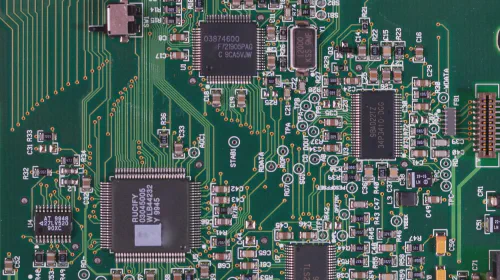Polygon vs. Solana: Exploring the Differences
Salomon Kisters
Mar 21, 2023This post may contain affiliate links. If you use these links to buy something we may earn a commission. Thanks!
Solana and Polygon are two very distinct projects that seek to tackle the problem of trilemma in their own unique ways.
Both represent a new generation of blockchains that take alternative approaches to resolve the blockchain trilemma and enable the development of scalable decentralized and secure Web3 applications.
However, the difference between Polygon and Solana might be perplexing for many novice investors.
So, what exactly are these blockchains, and what makes them unique?
This article will not only provide in-depth information on these two blockchain networks but will also highlight the key features that distinguish them and make them suitable for different segments.
What is Polygon?
Polygon, originally known as the Matic Network, was founded in 2017 and is a moderately popular cryptocurrency that consistently ranks among the top 15 cryptocurrencies by market capitalization.
At the center of Polygon’s vision is Ethereum, a platform that hosts a variety of decentralized apps, including virtual worlds, gaming, NFTs, and financial services. Unfortunately, the level of activity on Ethereum’s blockchain has rendered it nearly inoperative since transmission costs continue to grow and traffic is congested.
The Polygon platform connects Ethereum-based projects by leveraging the Ethereum blockchain. Using the Polygon platform can boost the flexibility, scalability, and autonomy of a blockchain project while simultaneously providing the protection, interoperability, and structural perks of the Ethereum blockchain.
In other words, Polygon, formerly known as the Matic Network, provides a simple foundation for new and current blockchain applications to develop on Ethereum without worrying about scalability. It is a Layer-2 scaling solution designed to help the Ethereum network expand.
Polygon allows programmers to create networks of Ethereum-compatible blockchains rather than only processing the components of a transaction on the sidechain. Hence, it is dubbed the “Internet of Blockchains”, built by developers for developers.
Users can engage with any decentralized application (dApp) using Polygon without ever having to be concerned about network congestion, slowing speeds, or gas fees.
What is Solana?
Established in 2017 by a Russian computer specialist, Anatoly Yakavenko, Solana is a blockchain platform for hosting decentralized, scalable apps. It is an open-source project now maintained by Solana Foundation located in Geneva, while the blockchain was developed by San Francisco-based Solana Laboratories.
Solana was designed to solve the blockchain industry’s scalability issue. Before Solana, most prominent blockchains struggled to execute a high number of transactions in a short amount of time. Bitcoin, for instance, the most prominent and frequently used blockchain, can only execute 7 transactions per second.
Even Ethereum, the second-generation blockchain, can only validate approximately 30 transactions within this time period.
Solana is much faster in terms of transaction processing capacity and offers significantly cheaper transaction costs than other blockchains, such as Ethereum. The cryptocurrency that runs on the Solana blockchain, also known as Solana and trading under the ticker symbol SOL, increased nearly 12,000% in 2021 and reached a market capitalization of more than $66 billion at one point, making it the fifth-largest cryptocurrency at the time.
Despite its growing popularity, SOL was not immune to the catastrophe that hit the crypto space in 2022. SOL’s market value plummeted to as low as $8.5 billion as of February of 2023. Its value dropped to the eleventh position in terms of market capitalization as a result.
How Does Polygon Work?
To understand Polygon, you must first understand Ethereum. It’s no secret that Ethereum has its fair share of problems. Ranked as the No. 2 cryptocurrency in the world, it still suffers from scalability issues, which can be seen in the speed by which transactions are completed.
Ethereum has primarily prioritized decentralization and security above scalability. Transactions, thus, became costly and time-consuming. This is where Polygon comes in, with its emphasis on faster transaction speeds and lower transaction costs than Ethereum.
At times of significant network congestion, gas prices grow dramatically, and Ethereum gas fees can easily exceed $50 to $80. This is a huge problem for most people who use the blockchain network. Because each transaction requires more than $50, Ethereum is out of reach for the vast majority of users.
But how does Polygon make this less expensive? Scaling techniques applied by Polygon help perform these transactions on side chains to save gas costs and lower network traffic. Polygon can manage up to 65,000 transactions per second, while Ethereum can only handle about 17 transactions per second.
Polygon, hence, enables users to carry out transactions at a fraction of the cost. Compare that to Ethereum’s average transaction charge of about $15 per transaction. As Polygon contains a suite of multiple protocols, including the zero-knowledge (ZK) proof type, customers get to have the optimum scaling solution suited to their needs and purpose.
In simple words, imagine Polygon as a subway express train; it follows the same route as the ordinary train but with fewer stops which makes it move significantly faster than the main track. Polygon creates this fast parallel blockchain and connects it to the main Ethereum blockchain using the latest technology.
How Does Solana Work?
Solana implements a set of consensus algorithms on its blockchain network to reach maximum scalability. Because of this approach, transaction throughput scales according to network capacity. Its design meets all three desirable blockchain characteristics, i.e. it is scalable, safe, and decentralized. Its design specifies a theoretical maximum limit of 710,000 TPS on a regular gigabit network and 28.4 million TPS on a 40-gigabit network.
Solana protocol’s principal component is the Proof-of-History mechanism, a series of calculations that gives a digital record and ensures that an event has occurred on the network at any given point in time. It is like a cryptographic clock that provides a timestamp to each and every network transaction, as well as a data structure that is a simple addition to the blockchain.
PoH is centered on PoS and employs the Tower Byzantine fault tolerance (BFT) algorithm, which is an optimized variant of the practical Byzantine Fault Tolerance (pBFT) protocol. Solana leverages it to achieve an agreement amongst the network nodes on their values. The Tower BFT, in turn, maintains the network safety and operationally, and it also serves as an additional tool for transaction validation.
Solana features a 256-bit secure hash algorithm (SHA-256), which is a collection of patented cryptographic operations that produces a 256-bit result. The network samples the number and SHA-256 hashes on a regular basis, delivering real-time data based on the set of hashes contained in central processing units.
This sequence of hashes can be used by Solana validators to record a specific piece of data that was generated before the production of a given hash index.
The transaction timestamp is generated once this specific piece of data is entered. To accomplish the advertised high TPS and block generation times, all network nodes must have cryptographic clocks to keep track of events rather than waiting for other validators to authenticate transactions.
The Future of Polygon
At one time, Polygon had high gas prices and sluggish block confirmations, both of which hampered user experience. The blockchain developers needed to act quickly, or the blockchain would have been overshadowed by competing projects. This was achieved with the creation of Plasma, which allows for quicker and lower-cost transactions (about 65,000 transactions per block).
There are a few collaborations that analysts believe will influence Polygon’s future, including those undertaken with the Xaya platform, Starbucks, the National Football League, and Liverpool. The fact that they are introducing decentralized games on the ETH sidechain and collaborating with such big brands screams “growth”. With that being said, we conclude the future of Polygon to be prominent and bright.
The Future of Solana
After falling to $170 by the end of December 2021, SOL plummeted further to a value of $26 due to a major bearish phase. The year 2022 has not been kind to SOL, but the same goes for most cryptocurrencies. The year 2022 was overall labeled as a bear phase by experts.
However, looking under the surface, experts believe Solana has a lot to be excited about in the future. Ripple and Solana are partnering together with other cryptos to advance the usage of crypto-based solutions for climate change. The two blockchain titans have joined a newly formed non-profit organization called blockchain x Climate Leadership Network (BxC) for this purpose.
All in all, Solana will be a prominent player in the crypto industry for the foreseeable future, and we expect it to do well in terms of price appreciation until the end of the current BTC bull cycle. Therefore, the future of Solana looks bullish.
Conclusion
Which one should you choose, Polygon crypto or Solana? Polygon offers a much more inclusive means of interacting with the Ethereum network, while Solana is an excellent option for users who desire the maximum level of affordability and scalability.
Solana is one of the best platforms if you are looking for maximum functionality. Polygon, on the other hand, is a better alternative if you need compatibility, a large user base, and access to the most popular applications in the crypto world.
To avoid confusion keep in mind that Polygon was originally known as Matic. They changed the name a few years ago but the ticker symbol is still MATI
Stay informed with the latest insights in Crypto, Blockchain, and Cyber-Security! Subscribe to our newsletter now to receive exclusive updates, expert analyses, and current developments directly to your inbox. Don't miss the opportunity to expand your knowledge and stay up-to-date.
Love what you're reading? Subscribe for top stories in Crypto, Blockchain, and Cyber-Security. Stay informed with exclusive updates.
Please note that the Content may have been generated with the Help of AI. The editorial content of OriginStamp AG does not constitute a recommendation for investment or purchase advice. In principle, an investment can also lead to a total loss. Therefore, please seek advice before making an investment decision.

What Is Polygon MATIC and How Does it Work?
Polygon MATIC is a layer-2 scaling solution based on Ethereum that allows projects to scale their applications securely and without trusted third parties. Let's explore.

What is Solana, and What are Its Use Cases?
Solana is a modern blockchain that differs significantly from the Bitcoin network. This post will discuss Solana and its use cases.

Ethereum vs. Solana - What's the Difference?
This article will compare different aspects of Ethereum and Solana to highlight the differences and similarities between both projects.
Protect your documents
Your gateway to unforgeable data. Imprint the authenticity of your information with our blockchain timestamp